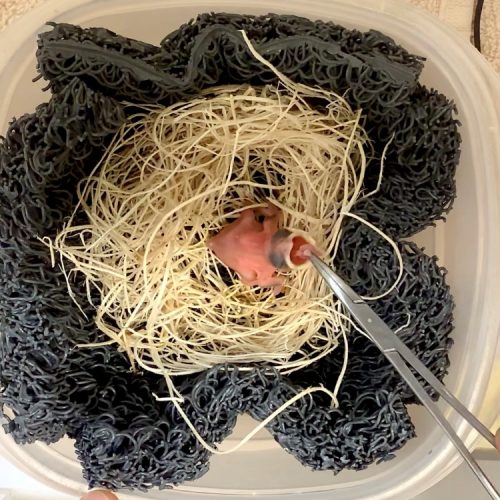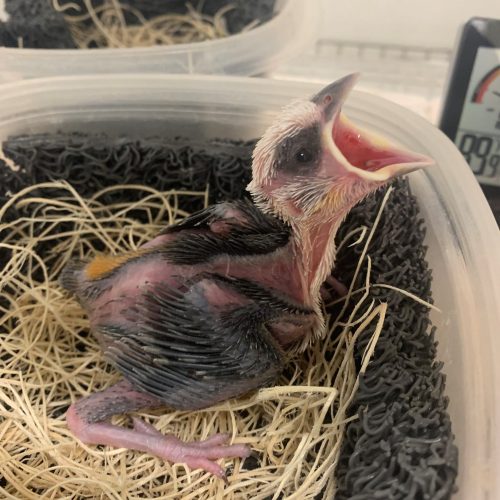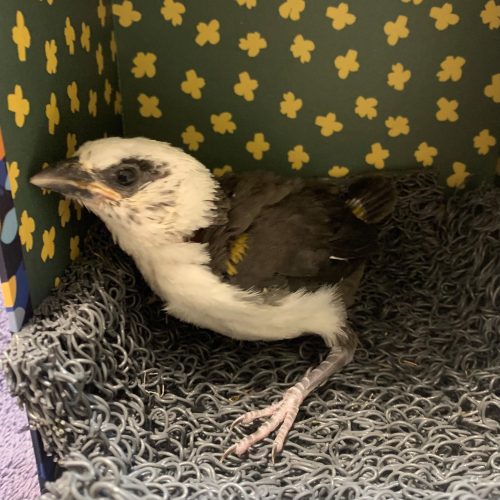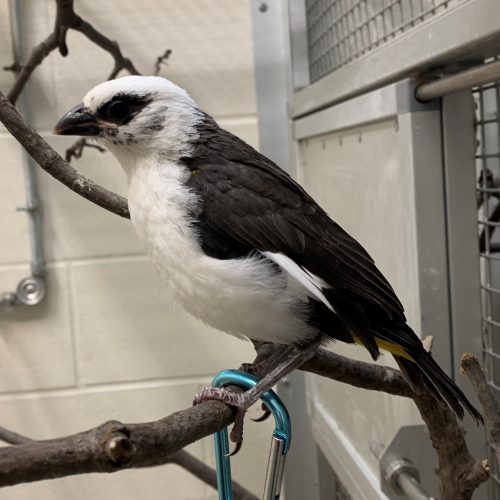The white-headed buffalo weaver is a passerine species of bird that is endemic to east African countries. It resides in savanna/shrub habitat and feeds on a variety of fruits, insects, and seeds. Pairs build elaborate nests made of small sticks and twigs.
White-headed buffalo weavers have been in zoos for more than a century. As of 2021, there were just over 100 birds in 33 AZA-accredited institutions. The first recorded hatch in a zoo was in 1980, and zoo population then grew due to importation and continued breeding successes, reaching a peak of 130 weavers in 2016. Since 2016, the population has been declining due to an aging population and fewer hatches. Recommendations were made to improve husbandry, increase hatches, and increase space in institutions to compensate for the decrease in the population.
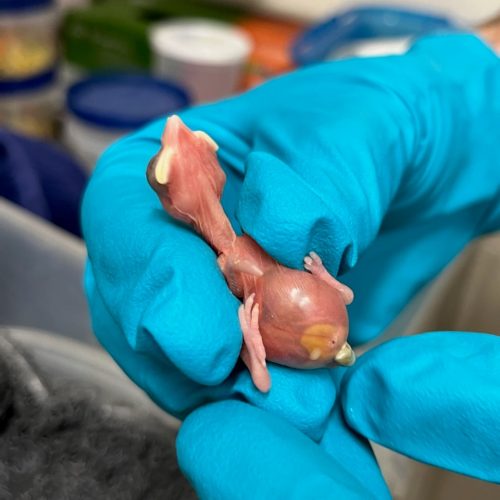



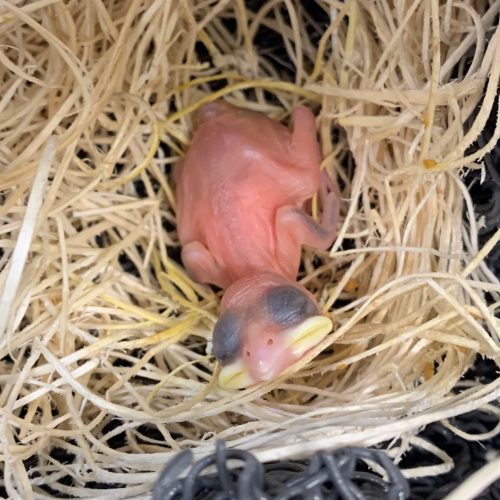



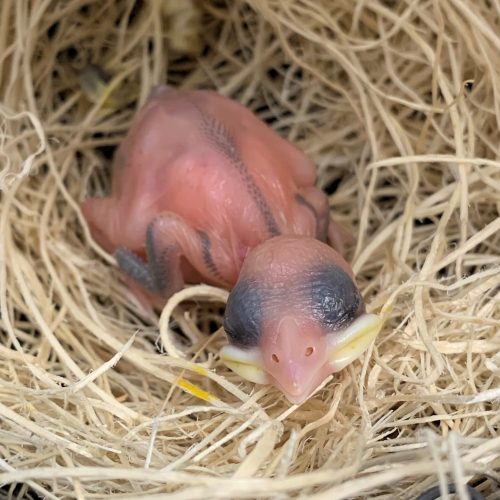

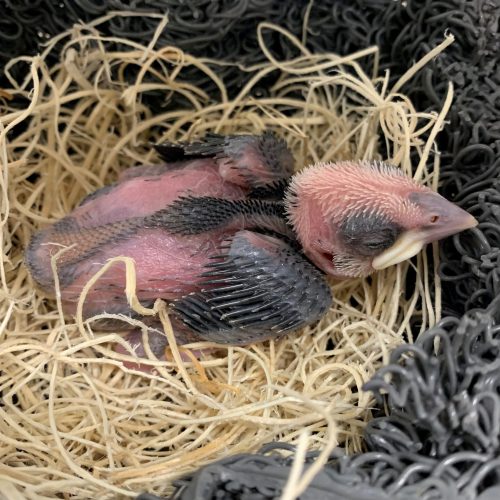

In fall 2020, animal care staff paired our buffalo weavers Simon and Edie. White-headed buffalo weavers usually lay 2-3 eggs with a very short gestation period of 12 to 14 days. Although they did begin to breed and lay eggs, none made it to the point of successfully fledging, despite diligent care from the zoo keepers. Simon and Edie simply weren’t providing the parental care a hatchling needed. A call was made to the Species Survival Plan coordinator for white-headed buffalo weavers, who suggested we investigate hand-rearing this species.
Discussions with a curator at a zoo successful in hand-rearing white-headed buffalo weavers were key to our subsequent success, as we adopted many parts of that zoo’s protocol into our own. Virtual meetings allowed our team to ask questions about husbandry techniques and milestones to look for. We re-purposed one of the Animal Health department’s incubators as a chick brooder and ordered a special matting recommended to form a nest cup for raising chicks. Having this network and community available to us was a game changer as we went into uncharted territory.
On October 30, 2022, a chick hatched, and we put the new protocols in motion. Keeper staff monitored parental behavior to determine the right time to pull a newly hatched chick from the parents. As there is no easy way to look directly into the complicated woven weaver nest, observing parental behavior is key.
At 5 grams, this little weaver had a lot of growing to do! A small group of staff tag-teamed feeding the little bird. We shared husbandry techniques and developmental milestones after each feeding, keeping detailed notes.
Using the same small team for each feeding was key to rearing the chick. The chick was fed seven times daily (every two hours from 6 a.m. to 6 p.m.) for the first 12 days. In November, the chick grew from 6 to 80 grams.
This is an important milestone for Seneca Park Zoo, and we are proud to contribute to bolstering the white-headed buffalo weaver population in AZA zoos.
– Assistant Curator John Adamski
